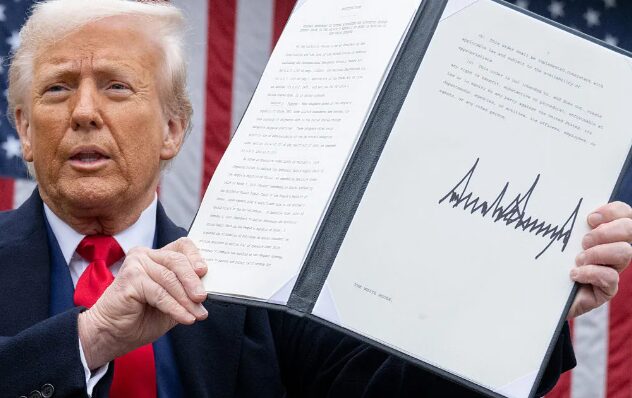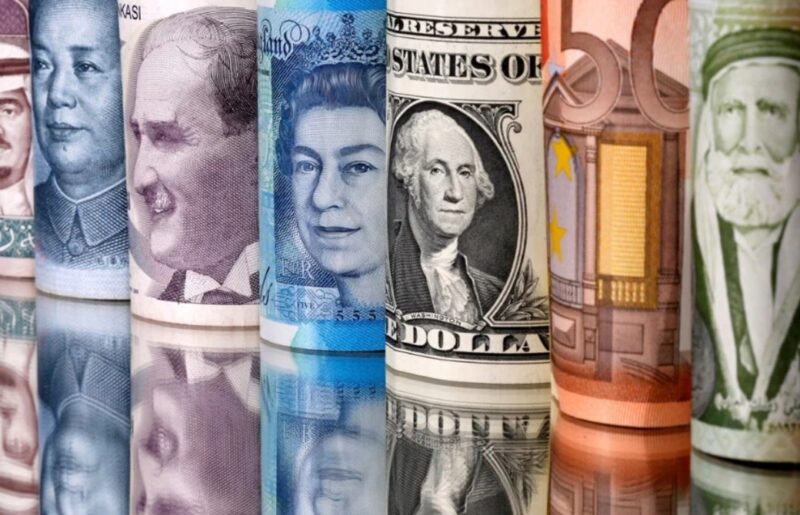The future of the U.S. dollar remains dismal because President Trump’s divisive tariff approaches generated substantial market confusion shortly before this writing period. The greenback achieved its lowest levels since 2014 because traders and investors moved assets as understanding of tariff objectives grew unclear. A concerning currency market sell-off indicates deeper problems with the stability of the world’s reserve currency along with its established position during these difficult economic times for the United States.
Also Read: China CBDC Deal With 10 ASEAN & 6 Middle Eastern Nations – Real or Fake
How Trump’s Tariffs Are Shaping U.S. Dollar Forecast and Market Trends


The U.S. dollar experienced intense volatility despite achieving a short-term rebound at three-year low marks. Market trends indicated the U.S. Dollar Index (DXY) reversed half of its brief upward movement which prevented the currency from exceeding the 100.00 level. Many analysts failed to predict external factors affecting U.S. dollar forecast directions.
Shifting Tariff Narratives Creating Uncertainty
The inconsistent messaging around Trump tariffs has been identified as a major factor in the U.S. dollar forecast decline. Justifications continually shift from “protecting domestic industry” to “pressuring countries” to “reshoring manufacturing” and now potentially “replacing income tax.”
Matt Weller, Head of Market Research, had this to say:
“The lack of a consistent message about the primary purpose driving the aggressive tariff regime has left traders, businesses, and global policymakers more uncertain than ever.”
This uncertainty makes long-term planning nearly impossible for businesses as Trump tariffs reshape the U.S. economy landscape. Without clarity on conditions for tariff reduction, forex market trends remain volatile and, frankly, quite unpredictable.
Tax Replacement Proposals Adding to Concerns
President Trump’s recent statements about tariffs replacing income taxes have complicated the U.S. dollar forecast further. These comments suggest substantial tariffs may remain indefinitely, weighing on global trade prospects. As Trump stated directly on his Truth Social platform:
“When Tariffs cut in, many people’s Income Taxes will be substantially reduced, maybe even completely eliminated… THE EXTERNAL REVENUE SERVICE IS HAPPENING.”
Also Read: De-Dollarization: 5 Oil Giants Now Settling in Yuan, Not USD
Technical Analysis Shows Continued Weakness
From a technical perspective, the U.S. dollar impact appears increasingly negative. The U.S. dollar forecast indicates the DXY remains in a clear downtrend characterized by lower lows and lower highs, positioned near the 61.8% Fibonacci retracement of its 2021-2022 rally.
If the decline persists, the next test will occur around 98.00, with little support until 95.00. These levels are being watched closely as Trump tariffs continue influencing market sentiment and, in many ways, dictating the direction of trading activity.
Traders Abandoning Dollar for More Predictable Currencies
The unpredictability surrounding U.S. economic policy has prompted a shift in forex market trends. The U.S. dollar impact is being felt across numerous sectors, with the U.S. dollar forecast influencing how multinational corporations adjust their strategies.
Financial institutions are being forced to reconsider their positions as traditional correlations between assets are being disrupted by this tariff-induced volatility. Market relationships that were once considered reliable have been thoroughly transformed by the current economic climate and, in a lot of ways, may never return to their previous patterns.
Also Read: Shiba Inu’s Future If Bitcoin Soars to $2.4M: SHIB Holders Won’t Believe This
The U.S. dollar forecast creates both challenges and opportunities. While importers face increasing costs, exporters may benefit from improved competitiveness. Investors in dollar-denominated assets must carefully weigh currency risk as the U.S. economy undergoes transformation due to Trump tariffs.
The forex market trends suggest continued volatility until clarity emerges about American trade policy. For now, the U.S. dollar impact remains predominantly negative with few signs of immediate relief on the horizon, and investors should probably prepare for an extended period of uncertainty.





